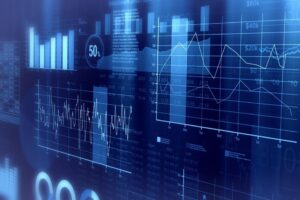We all heard “A picture is worth a thousand words”. This is true across many languages and culture which basically mean that complex data or idea can be conveyed with single image. It is no secret that we as humans comprehend data better visually then looking at spreadsheets. With data visualization, you can sip though vast amount of data more effectively to answer important questions and tell store. Data visualization and power of data science enable you to transform and unlock the power of your underutilized asset to a competitive advantage.
Data visualization is the process of creating visual representations of data in order to make it easier to understand and interpret. This can include creating charts, graphs, maps, and other types of visual aids that help to convey information in a clear and concise way. The goal of data visualization is to take complex data sets and present them in a way that is easily understood by non-technical stakeholders, such as business leaders and decision makers.
There are many different types of data visualizations, including:
- Bar charts: used to compare the sizes of different data categories.
- Line charts: used to show how a value changes over time.
- Pie charts: used to show the proportion of different data categories.
- Scatter plots: used to show the relationship between two or more variables.
- Heat maps: used to show how a value changes across two or more dimensions.
- Choropleth maps: used to show how a value changes across geographic areas.
- Dashboards: interactive visualizations that allow users to explore data in more depth and discover insights.
Data visualization tools like Tableau, Power BI, Looker, and many more can be used to create these visualizations and make it easy to communicate insights and results.





